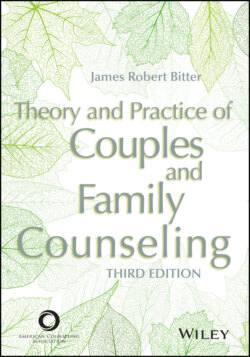Читать книгу Theory and Practice of Couples and Family Counseling - James Robert Bitter - Страница 52
Jay Haley
ОглавлениеBorn in Montana with an early childhood spent in Wyoming, Jay Haley moved with his family to Berkeley, California, when he was 4 years old. Jay had two sisters and a brother, and despite living in California, he was proud of his rural roots. He earned a bachelor’s degree in theater from the University of California, Los Angeles, and later completed a master’s degree in communication at Stanford University. It was while he was at Stanford that he met Gregory Bateson, who invited him to be part of the project that would study systems theory applied to families. This invitation came on the basis of a single conversation—an argument really—that Haley had while consulting Bateson about film analysis. What Haley brought to the Bateson communications project was an ability to take very complicated ideas and articulate them in a clear, direct manner, a gift that first manifested itself in a seminal article of the 1950s (Bateson et al., 1956).
In 1953, members of the Bateson project started to become interested in the hypnotherapy of Milton Erickson. Both Jay Haley and John Weakland attended a workshop offered by Erickson and then followed up with multiple visits to interview him. The conversations were all taped and became the basis for several of Haley’s early books. It is from Erickson that Haley incorporated the use of paradox, directives, and ordeals into therapeutic practice. It is from Erickson that Haley learned the value of indirect interventions to bypass resistance. Again, it was Haley’s gift for writing that made him the perfect person to bring Erickson’s ideas to counseling in general and to family interventions in particular. Haley and Weakland would observe, interview, and record many other important therapists, including Don Jackson, Joseph Wolpe, and Frieda Fromm-Reichmann.
In 1959, Don Jackson formed MRI, and Jay was named director of research. In 1962, Ackerman and Jackson launched the very first journal of family therapy, Family Process, and Jay would be the editor-in-chief for a decade. His first wife, Elizabeth, aided Jay in editing the journal. Haley (1963) published Strategies of Psychotherapy in the early 1960s. He also met and collaborated with Lynn Hoffman while at MRI, and together they would publish Techniques of Family Therapy (Haley & Hoffman, 1967), a set of conversations with family counselors and therapists about their initial sessions with families.
In 1967, Haley left MRI to join Salvador Minuchin at the Philadelphia Child Guidance Clinic. It was Jay who insisted on live supervision at the clinic and who developed a training model complete with a map for individual sessions.
Jay and Cloe Madanes, his second wife, were both at the Philadelphia Child Guidance Clinic until 1976, when they left to form the Family Therapy Institute of Washington, DC. What is perhaps Haley’s best work came from this period (see Haley, 1976, 1980, 1984) with his emphasis on problem-solving and family developmental processes. This is also when Cloe Madanes came into her own as a scholar-practitioner (see Madanes, 1981, 1984, 1990), bringing a humanistic-spiritual aspect to strategic interventions. The endpoint in strategic family therapy is always behavior change, the solving of family problems. Both Haley and Madanes embraced the belief that the problem was the problem—and when the problem was solved, counseling was over.
If the 1970s belonged to the structural family model, the 1980s belonged to strategic family therapy (Nichols & Davis, 2017). And indeed, most new practitioners in the 1980s were working from a hybrid of the structural-strategic models. In the 1990s, Haley moved back to Southern California with his third wife, Madeleine Richeport-Haley. Much of their work in this decade resulted in the production of films on anthropology and psychotherapy. In the last years of his life, Madeleine helped Jay to publish the last two books of his career, The Art of Strategic Therapy and Directive Family Therapy (Haley & Richeport-Haley, 2003, 2007). A retrospective of Haley’s career and influence was also published posthumously (Richeport-Haley & Carlson, 2010).
